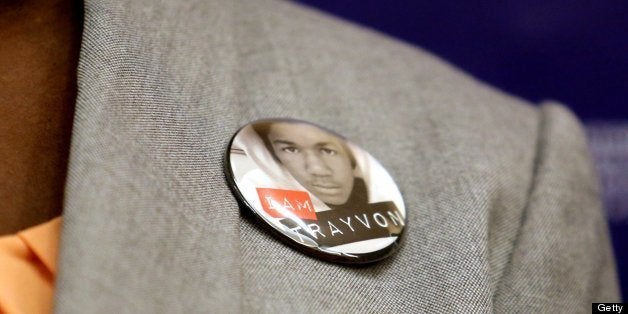
Mere hours after tweeting about how jarring it felt to watch all-white talking heads on CBS This Morning discuss President Barack Obama and race, I saw the July 29 Time magazine cover with the words "After Trayvon" emblazoned across an empty hoodie.
"This, this is the problem," I thought.
We in the news media have spent much of the past few weeks examining every nook and cranny in this country, looking for clues about how we have come to this point of racial angst.
The only place we have yet to look is inward.
And it's time.
It's time for us to look at what our distorted coverage of communities of color is doing to the country.
It's time for us to look at whether we're meeting our ethical obligation to give our audience factual and credible information necessary to make rational decisions in its private life and about public policies.
It's time for us to take seriously content audits showing that people of color are found primarily in stories about crime, sports and entertainment.
In November 2011, the Heinz Endowments' African American Men and Boys Task Force published a content audit examining print and broadcast coverage of black males by Pittsburgh media. In a three-month period, 86 percent of broadcast coverage of African-American men and boys focused on crime. In print, 36 percent of such coverage did so.
A month prior, the Opportunity Agenda, a New York City-based nonprofit, conducted a broad survey of research on coverage of black men and boys, and reported similar conclusions. Even positive images and attributes, the report said, "tend to be constrained to a small, stereotypic set which includes sports, physical achievement in general, aggressiveness, and musicality, to the exclusion of other everyday virtues."
Note the phrase "to the exclusion of other everyday virtues." That means what's often missing in coverage seen by the American public are mentions of the many African-American males who get up every morning and go to school or serve in the military, who are businessmen, schoolteachers, physicians, lawyers, scientists, stay-at-home dads and bloggers.
Look no further than Time magazine's recent Father's Day feature that failed to include black, Asian or Native American fathers.
Such omissions are not only inaccurate but reinforce the erroneous notion that black men are not loving and involved fathers. These content audits suggest that the daily picture of communities of color, painted inaccurately by the media, portrays them solely as dangerous and riddled with pathology.
That's the story we're telling our audience, and it has an effect.
Robert M. Entman, a professor of Media and Public Affairs and of International Affairs at George Washington University, wrote in a 2006 report for the Dellums Commission that the one-dimensional coverage of men and boys of color not surprisingly makes wider audiences suspicious of them and in favor of policies such as the death penalty while opposing those such as school reform.
It's not only time to look at what story we're telling but to look hard at who's telling the stories.
Every year when the American Society of News Editors releases its newsroom diversity census, we have the same dispirited conversation that sags under the weight of previous fruitless discussions.
For years, progress in diversifying newsrooms has stalled, and we never approached the goal of having the nation's newsrooms reflect the nation's diversity by the year 2000, instead the goal was revised to 2025.
According to the 2013 survey, only 12.37 percent of full-time daily newspaper journalists last year were people of color. People of color make up 37 percent of the U.S. population. The U.S. Census Bureau projects that people of color will be 42 percent of the population by 2025.
The nation and its news media are going in opposite directions, and the public is paying the price.
To tell the stories of communities of color, we're relying increasingly on people who may have little or no knowledge about them.
No one would suggest that these journalists wake up with the goal of distorting the lives of communities of color, but sometimes you don't know what you don't know. A dwindling number of journalists and media managers of color means that fewer resources are available to help complete the picture.
Even for those who contend that in these tight economic times, we must do the best with the staffs we have, there are ways to improve coverage. But you must fully intend to do so.
Fault Lines, the Maynard Institute's innovative diversity training program, asks journalists, when framing stories, to think about race, class, gender, generation and geography in much the same way as who, what, when, where why and how.
That allows automatic thought about whose perspective is being heard and whose is being left out. We also remind people that this is not about positive or negative images of communities of color but about accurate and inaccurate coverage.
If you have a Father's Day feature that ignores a growing percentage of the population, it's inaccurate. If you have a back-to-school story that ignores a growing percentage of the population, it's inaccurate. If you find that you're depicting only certain people in crime stories, it's inaccurate.
As journalists, our No. 1 job is to ensure that we provide our audience the most accurate information possible. It's time for us to look at whether the slaying of Trayvon Martin is a tragic example of what can result when the story we tell is one-dimensional and inaccurate.
Dori J. Maynard is president of the Robert C. Maynard Institute for Journalism Education in Oakland.
This column was originally published by The Oakland Tribune as a guest commentary on August 3, 2013.